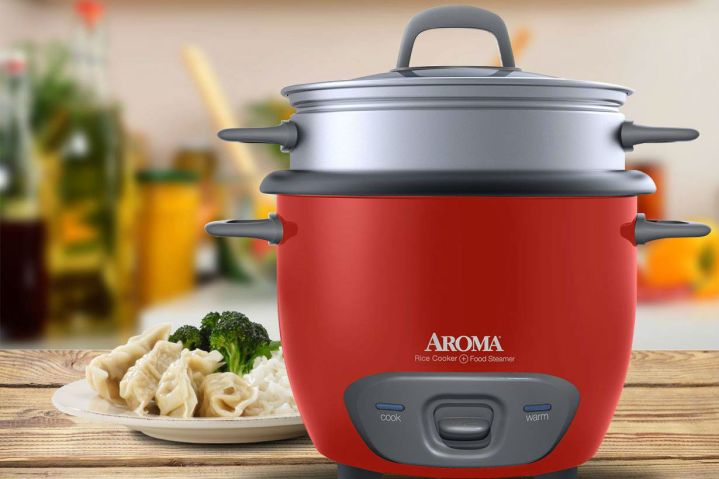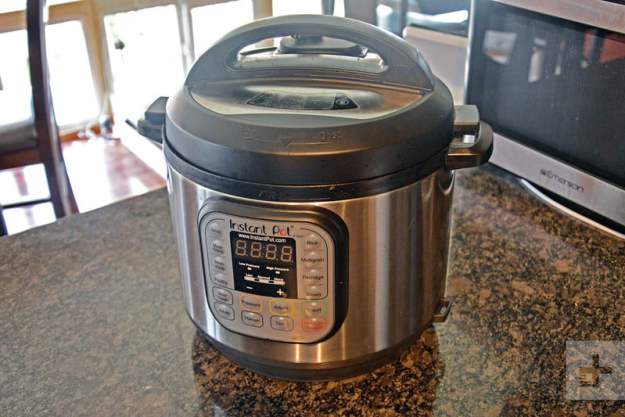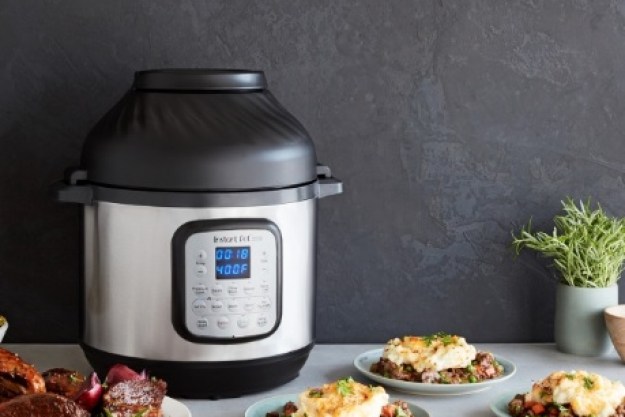Over the last several years, countertop cooking devices like rice cookers and pressure cookers have increased in popularity. Instant Pot is perhaps the most well-known name in pressure cooking devices, and most people have had someone say to them: “You have to try an Instant Pot.”
- An Instant Pot is a multi-functional pressure cooker, a rice cooker is more like a food steamer
- Instant Pots have a dedicated rice button (but with caveats)
- Instant Pots are generally faster at cooking rice
- Instant Pots require less liquid than rice cookers
- Instant Pots typically have more cooking functions than rice cookers
- You can cook more recipes in an Instant Pot than in a rice cooker
- Instant Pots are sealed with a rubber ring, rice cookers are not necessarily sealed
- Instant Pots can sterilize, while most rice cookers can’t
- Instant Pots are generally more expensive than rice cookers
- Instant Pots are all pretty similar to one another, but rice cookers run the gamut
If you’re not an Instant Pot fanatic or if you haven’t used too many standalone rice cookers, you may wonder what the difference is between an Instant Pot and a countertop rice cooker. They look fairly similar, and they’re both typically found in the same aisles in stores like Walmart or Target. Both cookers make a heck of a good bowl of rice, too. But, how exactly are the two kitchen gadgets different?
Below, we break down the major differences between rice cookers and Instant Pots. We’ve also rounded up the best Instant Pot deals available now, if you decide everyone’s favorite pressure cooker is right for you.
An Instant Pot is a multi-functional pressure cooker, a rice cooker is more like a food steamer

An Instant Pot is comprised of an outer pot (that houses a heating element, a microprocessor, pressure sensors, and a display panel with buttons for the user to input their commands), an inner pot which holds the ingredients, and a lid (which has a sealing ring and pressure release valve). When you place water and ingredients inside of an Instant Pot, seal it, and turn it on, the water heats and pressure builds. As pressure increases inside the pot, the boiling point of water also increases. This allows the food inside the pot to cook faster and at higher temperatures. The microprocessor works with the pressure sensors and the heating element to create a precise cooking environment with stable pressure, so the food cooks evenly without scorching.
A rice cooker acts as a food steamer, but it doesn’t maintain pressure like an Instant Pot. You place the rice and liquid inside of the cooker, and it regulates the temperature while cooking the rice so that it comes out perfectly. Rice cookers don’t go much higher than the boiling point (212 degrees Fahrenheit) because the water turns into steam as it boils and absorbs into the remaining rice.
Instant Pots have a dedicated rice button (but with caveats)
Most Instant Pots come with a dedicated rice button for automatic settings choices. However, there’s a catch: The rice button is designed specifically for long-grain white rice. If you have any other kind of rice, Instant pot suggests you use the standard Pressure Cook program and has some suggested temperature ranges to follow. It will probably take some practice to get it just right.
Rice cookers, on the other hand, tend to have dedicated buttons for a variety of different rices and grains, which makes it easier to customize your programming for the type of rice you want to cook. That’s important if you are cooking more brown, wild, sushi, or risotto rice.
Instant Pots are generally faster at cooking rice

It’s not always a guarantee, but Instant Pots are usually faster at cooking a large amount of rice compared to a traditional rice cooker. This is because of the pressure cooking, which forces foods — including rice — to heat up and cook faster. That means you can shave off up to 30 minutes of your cooking time, which may be a boon to those with tight schedules.
Instant Pots require less liquid than rice cookers
Because stand-alone rice cookers don’t maintain pressure like Instant Pots, your recipes may require more water. You can cook rice in an Instant Pot at a 1:1 ratio (one part rice and one part water), while you’d typically use a 1:2 ratio in a rice cooker (one part rice and two parts water).
Instant Pots typically have more cooking functions than rice cookers

The Instant Pot Lux is the baseline Instant Pot model, and it has 12 built-in programs: Bean/Chili, Meat/Stew, Soup/Broth, Sauté, Poultry, Steam, Congee, Multigrain, Rice, Pressure Cook, Keep Warm and Slow Cook. Higher tier Instant Pot models have even more functions.
A basic rice cooker will only have an on and off switch, while a model like the Aroma Housewares ARC-914SBD has a few built-in programs: white rice, brown rice, flash rice, keep warm, steam, delay start, and power and timer buttons.
You can cook more recipes in an Instant Pot than in a rice cooker
An Instant Pot acts as a rice cooker, slow cooker, pressure cooker, warmer, steamer, and sauté machine. Some of the higher tier models may have even more functions, like sous vide, dessert, or air fry. Because it has so many functions, you can cook so many different recipes in an Instant Pot, from meats to vegetables to cheesecake to yogurt. You can even make wine in an Instant Pot.
You can prepare a variety of different recipes in a rice cooker, but most of the recipes will use steam as the method of cooking. The Instant Pot’s other functions open up more recipe possibilities.
Instant Pots are sealed with a rubber ring, rice cookers are not necessarily sealed
An Instant Pot’s main function is to pressure cook. Instant Pots need to be sealed, so steam doesn’t escape when the pressure is building up. This is why the lid has a rubber sealing ring. Standalone rice cookers don’t necessarily need to be completely sealed to perform their main functions.
Instant Pots can sterilize, while most rice cookers can’t

Some Instant Pots, like the Ultra model, have a sterilize function. In laboratory testing, the Instant Pot effectively sterilized against the geobacillus spore. This spore is extremely heat-resistant, so this particular bacteria used to test autoclaves.
While rice cookers can sterilize to an extent (in a similar manner to putting something in boiling water), they generally do not have the sterilization capacity of an Instant Pot.
Instant Pots are generally more expensive than rice cookers

Although you can often find Instant Pots on sale, the smaller sized, baseline models (like the Lux mini) retail for $65, while higher-priced models (like the Instant Pot Max), retail for close to $200. If you’re looking for Instant Pot deals, check out some of the best Instant Pot deals available now.
You can easily find a rice cooker for around $20, although some of the programmable models do reach the $100 plus range.
However, if you really like the design of Instant Pots, it’s important to know that Instant Pot does have a line of rice cookers as well: They work in a similar way to Instant Pots, but without pressure cooking, and with more buttons devoted to brown rice, quinoa, etc. — it’s a good recommendation if you only plan on using Instant Pot’s rice cooking functionality. The Instant Zest in particular is a reliable and inexpensive model.
Instant Pots are all pretty similar to one another, but rice cookers run the gamut

Regardless of which model you choose — Lux, Duo, Duo Plus, Viva, Max, Ultra, Smart, or DuoNova — Instant Pots are all pretty similar to one another. The pricier models may have better features, a few more cooking programs, or be larger, but Instant Pots look and function similar to other Instant Pots.
Rice cookers can be vastly different from one another. You can find one rice cooker that looks like a slow cooker, another that looks like a pressure cooker, and another that looks like a Sous vide water oven. You can rice cookers that use induction heating, or even microwaveable rice cookers. Others, like the Zojirushi line pictured above, are designed to make excellent sushi rice.
Editors' Recommendations
- The most common Instant Pot problems and how to fix them
- Best Prime Day Instant Pot Deals for October 2022
- The best Instant Pot accessories for 2022
- What is a pressure cooker, and how do you use it?
- The best Instant Pot recipes you need to try


